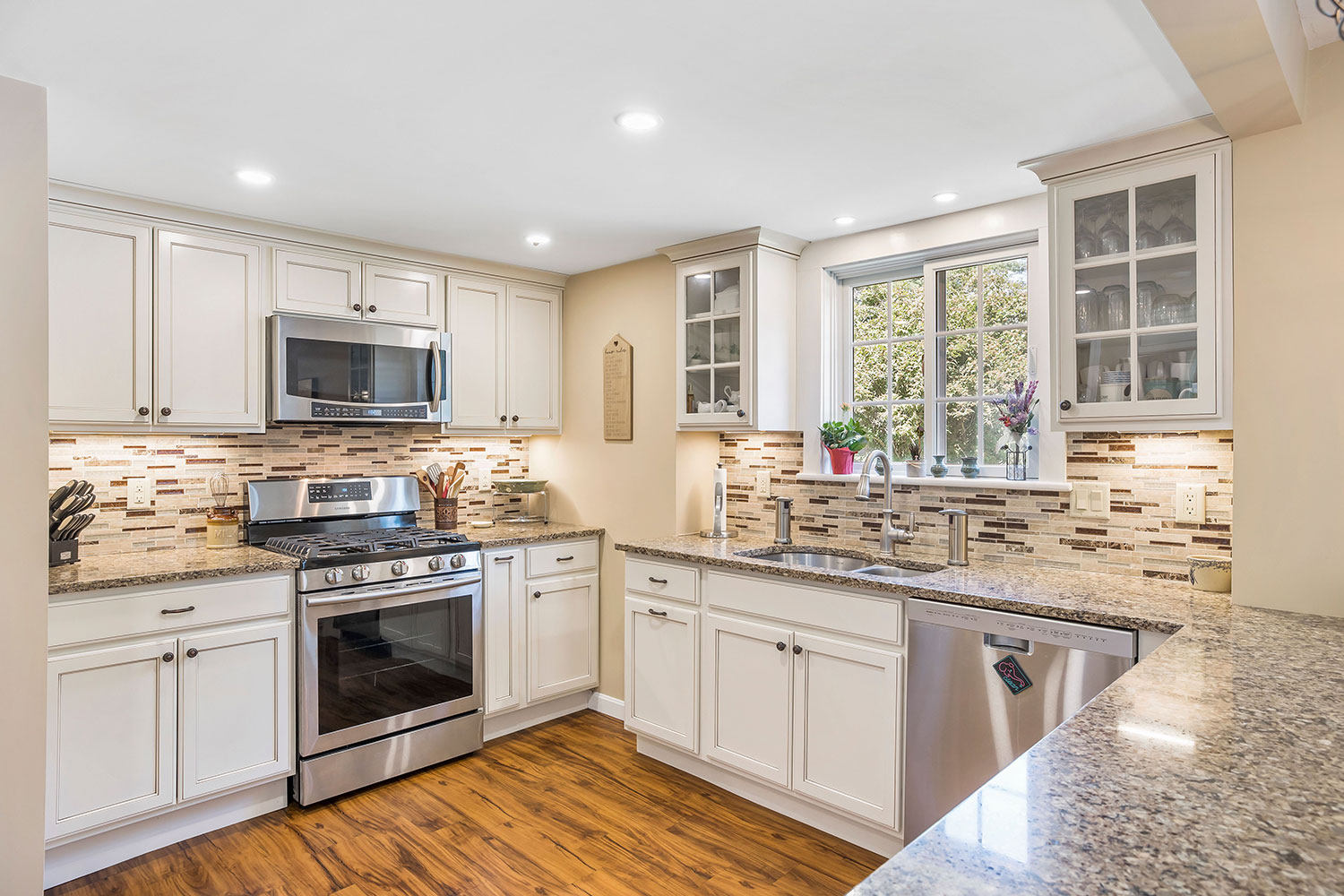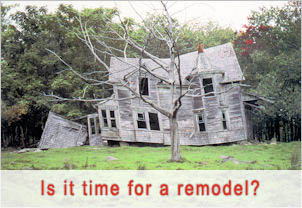
Selecting pieces that utilize strong woods, thick finishes and simple hardware with a track record of strength. Good cabinets frequently originate from plywood or hardwood, not skinny boards or bargain fiberboard. Long-lasting counters use stone, quartz or solid surface materials that don’t scratch or stain easily. Inspecting the edges, hinges and drawer slides can help indicate whether the construction will stand up to years of use. To complement style with function, opt for solids and wipe-clean surfaces. Smart choices come from looking for solid joinery and trusted brands with transparent product warranties. The rest of the post will deconstruct each point and demonstrate ways to make the right choice.
Key Takeaways
- By focusing on function and work flow, kitchens use space more effectively–meaning cabinets and counters that make everyday use easier.
- Choosing durable materials, like solid wood, plywood, or engineered stone, ensures longevity, easy maintenance, and eco-consciousness for countless families.
- Quality hardware and professional installation will help extend the life of your cabinets and counters, minimizing the need for future repairs or replacements.
- By bringing it all together into a cohesive design—uniting colors, textures and finishes—you’ll guarantee that your kitchen is not just functional, but stylish and personal, as well.
- Considered budgeting — investing where it matters and allocating for surprises — backs long-term satisfaction and cost-effectiveness.
- Coupling a thoughtfully selected backsplash into the mix can complete your kitchen design, offering both functional protection and a unique design statement that balances the space.
Function Before Form
A kitchen for keeps begins with decisions based in life — not simply aesthetics. Function before form means considering how cabinets and counters will work for you every day, not just how they photograph brand new. Style, scale and type of each element should correspond with your routines, storage requirements and space constraints. For most, the toughest part is settling on the layout–this choice impacts everything from flow to storage acquisition.
Your Lifestyle
How you cook alters what your kitchen requires. If you cook frequently, opt for counters constructed from hardy materials, such as engineered stone or stainless steel, that can withstand heat, spills and knife stains. Families cooking big meals might require deep drawers or wide pull-out shelves to have pots, pans and utensils within reach. Entertainers may desire open shelving or glass-front cabinets to showcase serving pieces. If your days are hectic, seek out cabinets and finishes that wipe down with minimal effort, such as matte laminate or thermofoil, which repel smudges and stains.
Your kitchen should fit not only how you cook, but how you live. One individual might desire stylish, streamlined storage, while a family requires space for bulk groceries and snacks. Small kitchens benefit from narrower cabinets—18 to 24 in. Wide—so you accumulate storage without crowding walkways. Selecting fingerprint resistant finishes means surfaces stay clean in busy households.
Kitchen Workflow
Good workflow depends on the classic kitchen triangle: sink, stove, and refrigerator placed to cut down on extra steps. Counters need to be food-prep length, even when an air fryer or microwave is hogging it. Smart planning keeps the counters clutter free – with ingenious answers like countertop cabinets. Sometimes a peninsula will work better than an island, even if it looks less stunning.
- List every task you do in the kitchen daily
- Sketch a triangle between sink, stove, and refrigerator
- Check for clear counter space near each appliance
- Don’t cramp, leave at least 1 metre between opposing cabinets
- Place often-used appliances within arm’s reach
Appliance location influences how easily you transition from activity to activity. Position the dishwasher next to the sink. Keep cutting boards and knives near prep spaces.
Storage Needs
Now, tally up your kitchen utensils, cookware and pantry stuff. This indicates how many cabinets you require. Make a checklist:
- List all pots, pans, and small appliances
- Measure pantry goods, including bulk items
- Note if you need deep or shallow shelves
- Think about spices, baking trays, and tall bottles
Go with tall cabinets or open shelves to ceiling when space is scarce, even if the aesthetic is a little cramped. Pull-out shelves, lazy Susan’s and drawer organizers simplify grabbing what you use most. Storing everyday items at waist height saves you time and prevents excessive stretching or bending.
Select Durable Kitchen Materials
Choosing kitchen materials that endure is a matter of balancing durability, upkeep, and environmental considerations. Cabinets and countertops must withstand daily abuse, resist wear and remain beautiful for years. Below is a table to compare key cabinet materials, highlighting their strengths, upkeep needs, and environmental considerations:
Material | Durability | Maintenance | Environmental Impact |
Solid Wood | High | Moderate (may need resealing) | Renewable, biodegradable |
Plywood | High | Low to moderate | Renewable, low emissions |
Particle Board | Low | Low | Uses recycled wood, but less durable |
Melamine/TFL | Moderate-High | Low | Some VOCs, recyclable |
Metal (Steel/Copper) | High | Low to moderate | Recyclable, long lifespan |
Cabinet Construction
Solid wood and plywood cabinets are the best choices when you want something durable. Solid wood—particularly maple, oak, birch, walnut, and cherry—wears incredibly well and can last for decades with proper maintenance. Plywood — composed of layers glued together with a robust adhesive — withstands moisture better than particle board, resisting warping.
See how the cabinets are constructed. Dovetail or mortise-and-tenon joints are indicative of quality. Doors and drawers take a beating, so hardware should be stellar. Particle boards may be less expensive but they deteriorate quicker, especially in active kitchens. Never forget to seek out a construction warranty because it’s a shining example of the fact that the maker believes in their work.
Cabinet Finishes
Cabinets, finishes, finishes make a difference in how they age. Moisture- and stain-resistant finishes help keep cabinets looking new longer — particularly in kitchens where spills abound. Matte and satin finishes mask marks and scratches, while glossy ones expose smudges fast. Choose something that just wipes clean without abrasive scrubbing.
Natural Stone
Granite and marble are still sought after for countertop durability and timeless elegance. Both stones require sealing to protect against stains and water. Granite is harder and more resistant to scratches, so it’s better for heavy usage. Marble, although elegant, stains more readily. These stones are weighty, so make sure your cabinets can bear the burden.
Engineered Stone
Quartz countertops provide a non-porous surface that resists stains, scratches, and heat. They are available in an array of colours and patterns, suited to contemporary and traditional kitchens. Quartz is a breeze to clean and requires no sealing, making it practical. Warranties frequently undergird quality, as well, so shop around before deciding.
Solid Surface
Solid surface counters, such as Corian, meld sinks and counters for a fluid appearance. These are simple to clean, non-porous and can be repaired if scratched. There are a variety of colors available allowing you to customize it to your style. Not as hard as stone, but they still wear well in most kitchens.

The Unseen Durability Factors
Selecting long-lasting cabinets and counters is more than just surfaces and colors. Real longevity is founded on tiny factors that are invisible—hardware quality, installation expertise, warranty provisions. These factors, if ignored, can result in expensive replacements or repairs much earlier than anticipated.
Hardware Quality
- Essential hardware types for long-lasting cabinets: * Full-extension drawer slides.
- Thick-duty shelf brackets.
- Soft-close hinges to muffle impact sounds.
- Unseen durability factors
- Sturdy mounting brackets for wall cabinets
The quality of knobs and handles is as important as their appearance. Stainless and solid brass outlast and tolerate water better than coated alloys or plastics. It’s smart to test hardware for durability—jiggle knobs, open and shut drawers, and sense for firm tension. Hardware that bends, creaks or feels loose won’t survive the daily strain in a bustling kitchen or bath. Investing more up front on good hardware and drawer slides results in less replacements later and keeps cabinets functioning beautifully for years. Steer clear of cheapies that look the same but snap or wear out quickly.
Installation Skill
Again, hiring good installers is critical. Cabinets and counters must be perfectly level and firmly anchored or doors sag, drawers stick and seams open. One misstep can derail the whole system. Require accuracy—a few millimeters too much or too little leaves holes or uneven counters which stress joints and cause cracks. Installers should adhere to the cabinet or counter maker’s recommendations, employing their suggested tools and supports. Inquire about tricky locations—like uneven floors or strange wall inclines, etc.—so you can prepare for any special remedies prior to the work commencement.
Warranty Truths
A warranty only assists if you are aware of what it covers. All the small print. Some just cover supplies, not labor, others cover for a short time. Brand shop—longer, more generous warranties usually indicate a brand that really does believe in their product. See if they cover materials and installation. Store all paperwork in one spot, given you might sorely need it years down the line if anything goes awry.
Create a Cohesive Design
A cohesive design is about making each decision play well with the rest. Cabinets, counters and even floors set the tone for your kitchen. Their colors, textures and finishes need to flow for a cohesive, classic feel, not trendy for a year or two. Color and texture is a big part, so is seeing actual samples in your own environment before you commit.
Color Psychology
Color shapes how a kitchen FEELS. Soft neutrals—white, grey, beige—set a calm mood, while bold hues like navy or forest green bring energy or focus. If you desire a warm, welcoming atmosphere, those earthy hues and wood-look floors complement both painted or stained cabinets. For instance, white cabinets with medium oak floors and granite counters with warm flecks all look great together.
The colors you choose can also influence the perceived size of the space. Light tones make a room feel expansive. Deeper hues create drama but visually contract a space. Think about how color influences appetite and coziness as well—reds are invigorating, blues and greens soothing. Utilizing a combination of neutrals with pops of bold color brings dimension but not disarray. Accentuating a kitchen island or a special cabinet with a pop of color grabs attention without dominating the design.
Texture and Sheen
Texture is as important as color. Combine sleek, shiny counters with matte, painted cabinets for contrast. Wood or wood-look floors with a subtle grain add warmth that complements slick cabinets. Contrasting textures–such as combining rough stone with polished surfaces–make the room more sumptuous.
The level of shine you select matters. High-gloss finishes reflect light and brighten darker kitchens, while matte provides a gentler appearance. The tactile quality of materials counts as well–a handle or cabinet surface that feels nice encourages use and contributes to the sense of coziness.
Using Samples
Always request samples. Lay cabinet and counter samples beside your flooring to get a feel of how they coordinate. Lighting alters color, so view samples in the daytime and at night. Test finishes and textures side by side before making a final call. Imagining the entire palette in your space is the surest way to make sure the design works for you and remains appealing for years to come.
Budget for Longevity
A kitchen renovation budget for longevity centers on making smart cabinet and counter choices that will continue to look great and function well for years to come. As with many things in life, durable materials tend to be more expensive up front but more economical in the long run due to less repair and replacement. Heavy kitchen users, like large families or frequent entertainers, tend to be smart and invest a bit more in durable materials. The steps for budgeting are as follows:
- Establish an overall budget according to your longevity requirements and everyday consumption.
- Figure out your hot spots—cabinets and counters—that require the most hard-wearing options.
- Do some research and get a price comparison for material and labor from different suppliers.
- Leave a 10–15% cushion for surprise installation or repair expenses.
- Explore financing if it’s tight, like home improvement loans.
- Check for seasonal sales or supplier discounts.
- Check in with it regularly as the project unfolds.
Material Costs
Material | Average Cost (€/m²) | Durability | Maintenance | Long-Term Value |
Solid Wood | 150–350 | High | Moderate | Excellent |
Plywood | 50–120 | Moderate | Moderate | Good |
MDF | 40–90 | Low | High | Fair |
Quartz | 250–400 | High | Low | Excellent |
Granite | 200–350 | High | Low | Excellent |
Laminate | 30–80 | Low | High | Fair |
Countertop materials are all over the map in terms of cost and longevity. For instance, quartz and granite are more expensive but provide longevity and require minimal maintenance. Laminate or MDF is less expensive, but they tend to need replacing sooner. Score at sales or sale-like events, and you’ll end up with a cheaper cost basis, and choosing durable materials will save you on future repair expenses.
Labor Expenses
Obtaining quotes from multiple contractors assists in locating the optimal labor cost. Certain tasks, such as installing laminate counters, can be handled by talented DIYers to save money. More complicated installations—like custom stone counters—require professional assistance, which brings the price up. It never hurts to verify that the quote includes ripping out and disposing of those old cabinets or counters, hidden fees cannot be good.
Future Value
Opting for classic cabinet and counter designs allows the kitchen to still feel fresh years later. Substances such as solid wood or natural stone are known to add value to a home, so this could come in handy if you ever decide to sell. Trends are fleeting but classics tend to reward longevity. Quality items tend to give you more bang for your buck by blending longevity and timelessness.

The Backsplash Connection
The backsplash is the connection that brings cabinets and countertops together, defining kitchen style and functionality. When selecting a backsplash, begin with your countertop color. This helps establish the overall vibe of the area. Now, coordinate or contrast the backsplash and cabinets. For instance, a white stone counter works with a soft gray tile backsplash and light wood cabinets, or for bold style go with a dark blue tile against white. Utilizing the same or a close shade as your backsplash for your counter can really make the space feel calm and even. Choosing colors that starkly contrast one another such as black and white or blue and cream can lend punch. Even so, stick to a basic color scheme of three primary colors. Too many colors or patterns will make the space look busy and not as timeless.
Backsplashes provide an opportunity to introduce texture or color. Glass, stone, ceramic—they can all work, but consider what suits your lifestyle. Matte hides smudges, gloss tiles bounce more light and are simple to wipe down. Texture can be found in hand-cut tiles, raised patterns or even stone. Every material behaves differently in daylight or under LED strips, so test your samples at different times of day. Sometimes a backsplash can be the star in the kitchen, like a patterned mosaic behind the stove, and other times it should fade into the background so the countertop can glow. Allowing one element to really stand out lends the design a sense of order.
The perfect backsplash height and style go a long way. While most backsplashes stop at around 45 centimeters, running them all the way to the ceiling or across open shelves can make petite kitchens feel taller. A full-height slab of stone or quartz that matches the counter feels seamless, while small tiles with bold grout lines create strong lines and a sense of craft. Whatever you go with, select materials that are hardy and wipeable, because kitchens are just plain dirty. The perfect backsplash is one that is visually appealing, simple to maintain and suits your lifestyle.
Conclusion
Cabinets and counters that last begin with smart material choices. Choose stone or hardwood. Avoid weak fiberboard or thin tile. Inspect joints, hinges and drawer slides. Good build keeps doors straight and shelves firm. Coordinate colors, but let utility drive aesthetics. Design for spills, heat and stains. Consider the sink-to-stove traffic pattern. Backsplash really ties the room together, so choose it wisely. Pay for solid craftsmanship, not just aesthetic. Be on the lookout for hidden costs, like trim or delivery. Be patient. Get tips from pros and friends. Want a kitchen that holds up and looks great? Choose the best combination of rugged and intelligent and uncomplicated. Leave your kitchen tales or queries in the comments.
Frequently Asked Questions
1. What are the most durable materials for kitchen cabinets?
Solid wood and plywood are both incredibly strong and last a long time. They stand up to abuse better than particleboard or MDF, which makes them precious in a kitchen that gets daily use.
2. How can I make sure my counters last a long time?
Select counters constructed from quartz, granite or solid surface. They resist stains, heat and scratches, preserving their beauty and function for years to come.
3. Why is cabinet construction important for durability?
Well-built cabinets employ hard joinery, quality hardware and moisture-resistant finishes. These features keep them from warping, sagging, and premature wear.
4. Does the backsplash affect cabinet and counter durability?
Yes, a backsplash shields the wall from water and stains, helping cabinets and counters last longer.
5. How do I balance style and durability in kitchen design?
Choose materials and finishes that suit your style but are proven to endure. This makes your kitchen both look good and withstand daily wear and tear.
6. Is it worth spending more on higher-quality kitchen materials?
Quality goes a long way in terms of upkeep and repairs. It can save you money and aggravation down the road.
7. What should I consider for a lasting kitchen on a budget?
Go big for cabinets and counters, then opt for more economical finishes and hardware. Target longevity where it counts.
Your Dream Custom & Energy-Efficient Kitchen Remodel by Mares & Dow Construction & Skylights – Let’s Create the Heart of Your Home
Transform your kitchen into a stylish, functional, and energy-efficient space with a custom remodel from Mares & Dow Construction & Skylights. With over 40 years of experience, we specialize in kitchen designs that blend beauty, functionality, and sustainability while complementing your home’s character and lifestyle.
Whether you’re envisioning a gourmet chef’s kitchen, a modern open-concept layout, or an eco-friendly upgrade with the latest energy-saving appliances, we customize every detail to match your vision, needs, and long-term goals.
Key benefits of our custom & energy-efficient kitchen remodeling services include:
- Designing a kitchen that’s tailored to your cooking, entertaining, and storage needs
- Boosting your home’s value with expert craftsmanship and modern functionality
- Incorporating energy-efficient appliances, lighting, and materials for lower utility costs and a greener footprint
Proudly serving Contra Costa County—including Alamo, Danville, Orinda, Martinez, and San Ramon—Mares & Dow Construction & Skylights is your trusted partner for kitchens that are as beautiful as they are practical.
Contact Mares & Dow Construction & Skylights today for a free, no-obligation quote and let’s bring your dream kitchen to life!
Disclaimer
The materials available on this website are for informational and educational purposes only and are not intended to provide construction, legal, or professional advice. You should consult with a qualified general contractor or industry professional for advice concerning any specific construction project, remodeling plan, or structural concern. Do not act or refrain from acting based on any content included on this site without seeking appropriate professional guidance. The information presented on this website may not reflect the most current building codes, regulations, or industry best practices. No action should be taken in reliance on the information on this website. We disclaim all liability for actions taken or not taken based on any or all of the contents of this site to the fullest extent permitted by law.




















 based on
based on 

